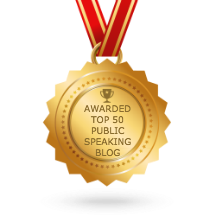There is no fast and easy way to reduce or modify an accent. If you are going to learn to reduce your accent, it is going to take considerable time and effort to practice.
OK, now I have said it! I don’t mean to discourage you, but I do mean to help you be realistic about reducing your accent.
With that out of the way, I’ll share what I believe to be the most productive and time-effective way to tackle accent reduction or accent modification.
To begin, clarify your goal. The goal should not be to get rid of your accent. It should be to speak English clearly so people can understand you easily when you speak English with your native accent.
If your goal is to have people understand you, you can limit the amount of time and work needed to achieve the result that is really important – clear articulation leading to intelligibility.
To achieve this more realistic goal, focus on learning to pronounce consonant sounds rather than vowel sounds. Here’s why:
Consonant sounds make speech clear, crisp and intelligible, meaning they make your speech easier to understand. Consonants are easier to learn than vowels. There is usually only one way to pronounce each consonant sound. Once you learn to position your teeth, tongue and lips for a consonant sound, you can insert it into any word and be fairly accurate.
Vowels, on the other hand, are more complicated. In English there is not a single standard for pronouncing each vowel. The “a” letter can be pronounced as many as 6 different ways. That makes learning vowel pronunciation very challenging.
Vowels can also vary in English pronunciation and still be acceptable. Each region of the US pronounces the vowels a little differently. So, a slight mispronunciation of a vowel from non-natives is not much of a problem. Our ears are willing to adjust to hearing the “i” in ‘him” mispronounced as an “e” like ‘heem.” While it is not correct Standard American pronunciation, it does not bother us much.
For all these reasons, the most valuable use of your practice time for reducing an accent is to focus on pronouncing consonant sounds.
My approach to helping a non-native professional speak English clearly is to identify the set of consonant sounds that will make the most difference to his or her speech. I have found that most people only need to learn a few consonants to be more easily understood. Chinese natives, for instance, often only need to learn to pronounce the sounds of N, NG, L, R, TH, V and W. Articulating these few sounds when speaking English makes a remarkable difference in their being understood.
If you are a non-native professional who needs to improve pronunciation, have someone with a trained ear listen to you speak. Ask them to tell you which consonant sounds you are missing or mispronouncing. Learn to articulate those consonants and then integrate them into your daily speech.
In another post, I will share how I coach clients to practice pronunciation skills.
Below is a 5 minute video of me speaking about my Speaking English Clearly Program.




